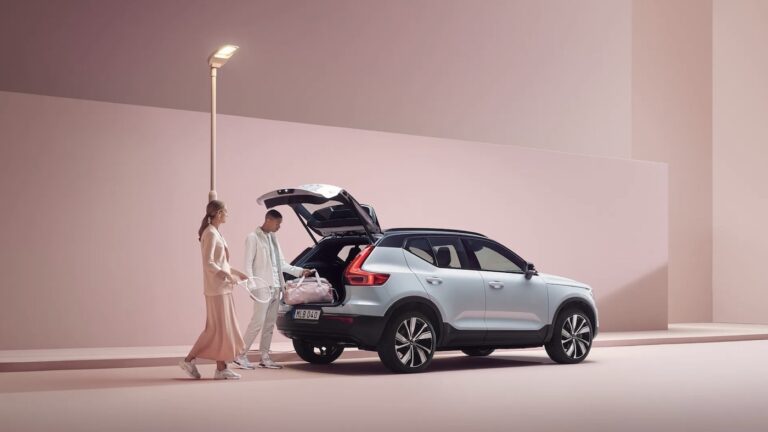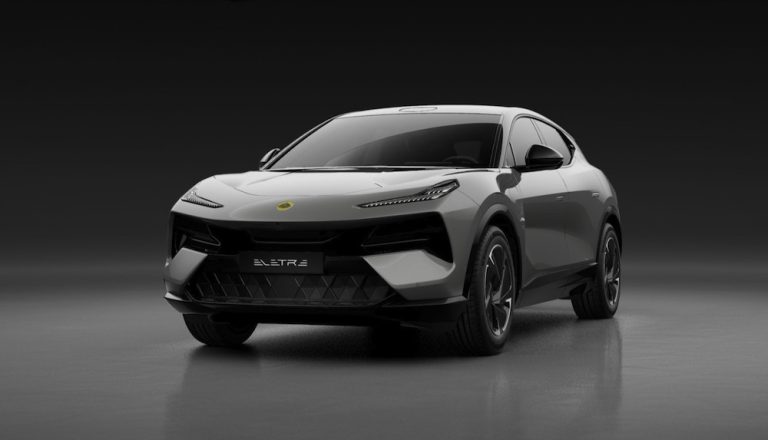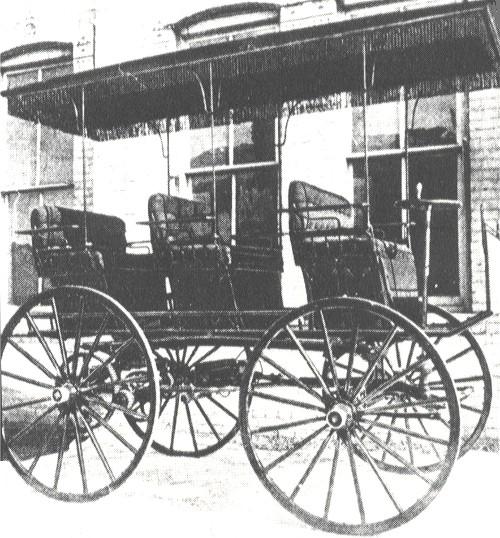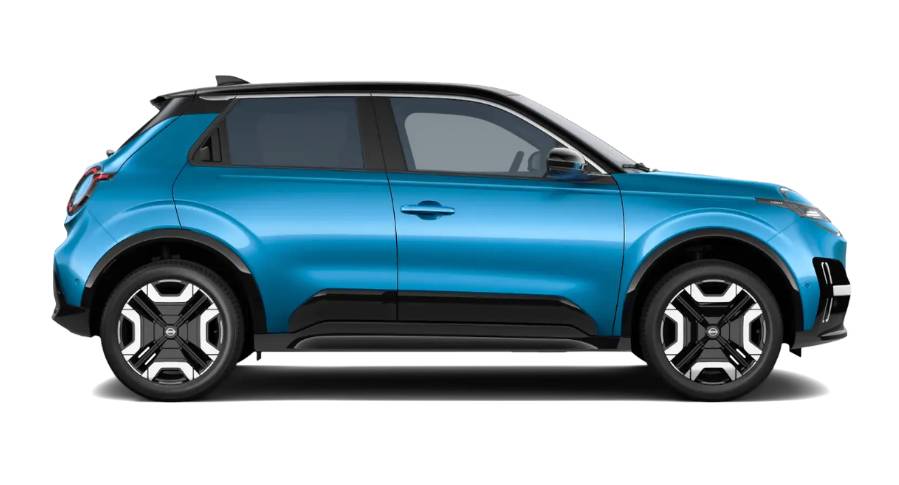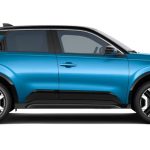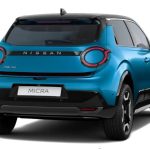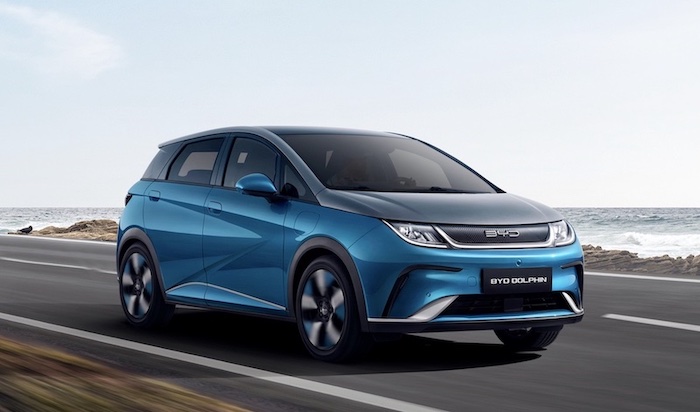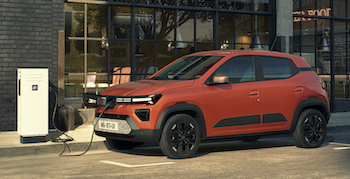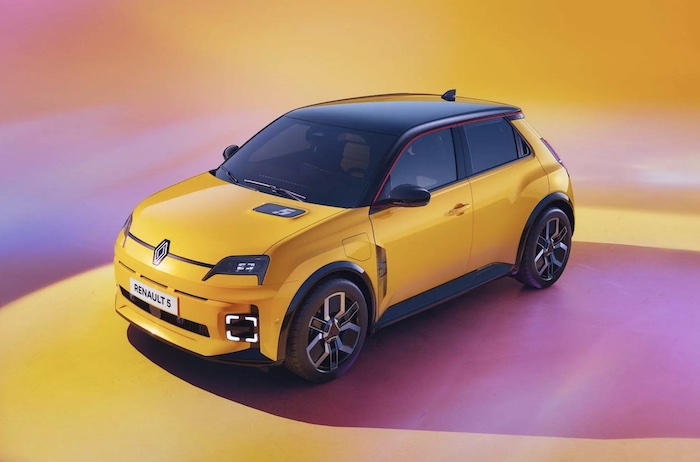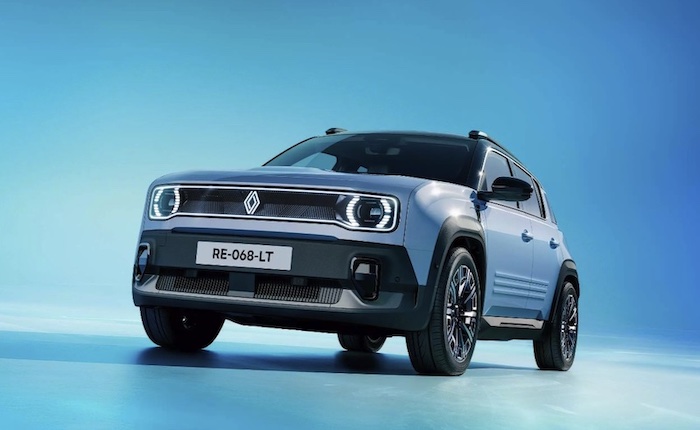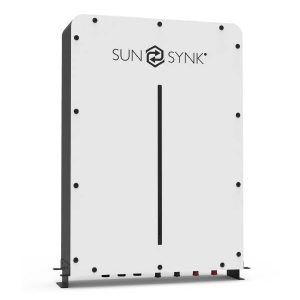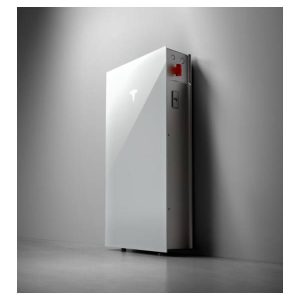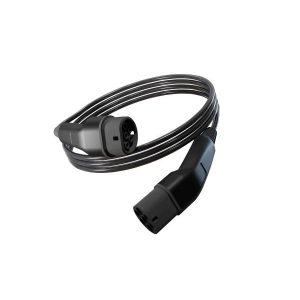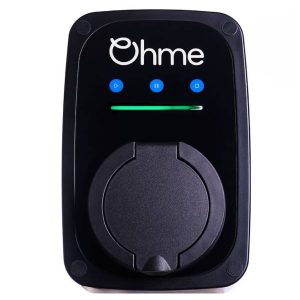Overview
Nissan Motor Corporation, a leading player in the global automotive sector is headquartered in Yokohama, Japan. The company is well known for leading automotive brands, to include: Nissan, Infiniti and Datsun. In 1999, Nissan became part of the global Renault-Nissan-Mitsubishi alliance, a partnership between France headquartered Renault and Japan’s Mitsubishi and Nissan. In December 2024, Nissan announced an MoU with Honda, the Japanese automotive manufacturer, to merge the companies (making it the 3rd largest automotive company by sales). Mitsubishi Motors, in which Nissan has a 24% stake will also participate in the merger. Nissan currently retains a strong presence in a number of global markets. Some of these include: North America, China, Russia and Mexico.
Nissan launched its first battery-electric vehicle (BEV), the Nissan Altra in 1997. In 2020, the company launched the best-selling all-electric Nissan Leaf. The Leaf BEV’s role in the development of the modern electric car industry has been significant. By 2014, the Leaf electric had a 45% market share of the global EV market, selling over 100,000 units. The company currently has the following battery-electric vehicles (BEVs) and plug-in hybrid electric vehicles (PHEVs):
- All-electric Nissan Leaf (BEV)
- All-electric Nissan Ariya (BEV)
- All-electric Nissan Micra (BEV)
Electric Cars: The Basics
For those of you new to zero-emission electric driving, we recommend a read of the following articles:
Sign up to the e-zoomed Electric Living newsletter
The All-Electric Nissan Micra hatchback
Many of us will be familiar with the conventional Nissan Micra supermini car (B-Segment), a best-selling cute and affordable hatchback launched in 1982. More than six million have been sold since its launch. Though the Nissan Micra internal combustion engine (ICE) variants have undergone multiple progressive generations and facelifts, its latest sixth-generation reincarnation as a battery-electric vehicle (BEV) will is a defining chapter in the history of the popular hatchback.
With the rapid increase in the adoption of electric vehicles (EVs) in our home market and also across the globe, automotive manufacturers are working at a frantic pace to introduce affordable and compact all-electric cars. The all-electric Nissan Micra hatchback is a good example of this trend and expect the momentum of affordable electric cars to continue over the coming years. For those of you new to electric driving it is worth noting that battery-electric vehicles (BEVs) give us an opportunity to reduce significantly life-cycle emissions from driving a vehicle i.e. reducing our own personal carbon footprint on the planet!
In fact, pure electric cars reduce life-cycle emissions up to 70% compared to conventional petrol and diesel vehicles. Moreover electric cars have zero-tailpipe pollution i.e. improve local air quality, and are much cheaper to drive and maintain compared to petrol cars! Today, there are very few good reasons (if any) to still drive an outdated drivetrain technology like petrol and diesel cars (internal combustion engine (ICE)). Countries like Norway have achieved near 100% adoption of electric cars. We can expect many more countries to achieve the same within a decade, to include our home market.
In terms of all-electric hatchbacks, we have now come a long way since the introduction of the first-generation all-electric Nissan Leaf (2010). Today a consumer is spoilt for choice for affordable and inspiring pure electric hatchbacks. Apart from the all-electric Nissan Micra, other family e-hatchbacks worth considering for urban driving are the all-electric Dacia Spring, the all-electric BYD Dolphin and the all-electric MG4 EV.
At first glance the Nissan Micra electric car looks familiar! And there is good reason for it. Both, the all-electric Renault 5 and the all-electric Nissan Micra use the same EV platform i.e. the EV-native AmpR Small platform. The all-electric Renault 4 also uses the same EV dedicated platform. This should not come as a surprise, given the Renault-Nissan-Mitsubishi alliance. A number of the latest-generation of electric cars share EV platforms. It helps automotive manufacturers reduce the cost of development of an electric car i.e. making it more affordable for the end consumer! In general, EVs developed on a dedicated EV platform have a stronger proposition on offer compared to EVs developed on a platform also shared with petrol and diesel cars.
The Nissan Micra EV was unveiled in May 2025. The BEV is available in two EV battery sizes: 40 kWh (400V) / 52 kWh (400V). According to the manufacturer, the entry-level 40kWh variant can deliver up to 198 miles (WLTP) on a full charge, while the larger 52 kWh variant can deliver up to 260 miles (WLTP). Even adjusting for real-world driving conditions, both variants offer ample day-to-day driving practicality for urban living and motorway driving. For the 40 kWh expect up to 170 miles and for the 52 kWh up to 220 miles on a full charge. According to Nissan, the miles per kWh (energy consumption) ranges between 4.23 to 4.38 for the above variants.
For those new to electric driving, a number of factors impact e-range, to include: driving style, speed, road surface, vehicle weight, weather, temperature, terrain, tyre size, regenerative braking profile and more! In comparison the Dacia Spring EV offers an e-range up to 140 miles and the BYD Dolphin EV up to 265 miles. Do keep in mind that the Dacia Spring has a smaller onboard EV battery (26.8 kWh). If your driving needs are primarily in an urban environment (short commutes), then we would recommend opting for the entry-level Micra 40 kWh variant. However, if you expect to do regular motorway driving, the Micra 52 kWh variant will be more suitable.
The Nissan Micra EV incorporates a 11 kW AC onboard charger as standard. Perfect for those with access to three-phase (11 kW) EV charging at home, work or public EV charging destinations. At 11 kW AC, the 40 kWh variant can be charged 10%-100% in 3 hrs 40 mins. Single-phase (7.4 kW) AC will take up to 5 hrs 45 mins. For the 52 kWh EV battery, 10%-100% (11 kW) will take 4 hrs 45 mins, and single-phase (7.4 kW) EV charging will take 7 hrs 25 mins. For DC rapid charging, the EV can be charged up to 80% in 30 mins.
The entry-level offers up to 80 kW DC, while the top variant offers up to 100 kW DC. Adequate, given the size of the EV battery and the urban demographic target market. Nissan offers as standard a 8 years or 100,000 miles EV battery warranty. Though this is now the industry standard, some automotive manufacturers offer even a longer EV battery warranty period.
For home charging we recommend the use of a smart EV charger which is solar compatible. We at e-zoomed also encourage EV owners to install on-site (home or business) solar PV and battery storage. It is a fantastic way to leverage the potential for lower cost of ownership of an electric car, and also achieve ‘well-to-wheel’ zero-tailpipe emissions. We at e-zoomed offer a number of fantastic solar PV and battery storage bundle offers!
Though the Nissan Micra EV and the Renault 5 EV look near identical from the side profile, the styling of the front and the rear do differ between the two electric cars. The Micra BEV has signature bold LED lights in the front and the back. Both the Micra EV and Renault 5 look attractive, albeit a different styling language. The Micra EV body styling language is ‘forward looking’, while the Renault 5 is ‘retro’. One interesting difference for the exterior is that Nissan is written in Japanese on the charging port cover! The BEV is available in a two-tone paint scheme (roof colours: black/ grey). Our favourite exterior paint colour is the blue!
In terms of size, the five-door Nissan Micra electric car is 3.97m long and 1.49m tall (1.77m wide). In comparison, the BYD Dolphin is 4.29m long and 1.57m tall (1.77m wide) and the Dacia Spring is 3.70m long and 1.48m tall (1.58m wide). The Micra EV offers a 326 L boot (up to 1,106 L with rear seats folded down). The boot has a high load lip. The Dolphin EV offers 345 L and the Spring EV offers 308 L. The Micra EV boot also includes a 27 L underfloor area to store the EV charging cable. The Micra BEV does not have a frunk. Nissan claims that the Micra EV design is ‘SUV inspired’, with elevated ground clearance to increase visibility.
The interior of the Nissan Micra EV is very similar (if not near identical) to the Renault 5. This is not a bad thing, as the Renault 5 does have much to offer in terms of the cabin space. Nissan has inserted a Mount Fuji silhouette in the interior to remind us of the heritage of the automotive brand. We will leave it to you to discover it! Though Nissan claims that the five-seat Micra is for 5 adults, it is worth noting that for taller adults the legroom and headroom are a real challenge. But given the compact dimensions of the EV, this is to be expected. We like the physical climate control in the Micra (yes, same as the Renault 5). There is 18L cabin storage.
The Micra EV has yet to be awarded the Euro NCAP Safety Rating. The BEV has a host of technology, equipment and advanced driver assistance systems (ADAS). Some of these include: distance warning, adaptive cruise control, lane assistance, rear view camera, hands free parking, lane departure warning, rear cross traffic alert, driver monitoring system, autonomous emergency braking and more. Other technology includes: Apple CarPlay (wireless), Android Auto (wireless), 7″-10″ TFT Combimeter, 10.1″ Infotainment System, battery preconditioning and more.
Bi-directional EV charging (Vehicle-to-load (V2L)) is standard on all variants. V2L charging is a bidirectional functionality allowing an electric vehicle (EV) to use its onboard high-voltage EV battery to charge or power devices/ appliances. It is also sometimes referred to as Vehicle-to-Device (V2D). Depending on the type of device/ appliance that needs to be charged or operated, V2L can be used while the EV is moving or parked. As an example, a laptop can be charged or used when an EV is parked or moving, while a lawn mower can only be charged or used when the EV is parked. You can buy V2L cables via e-zoomed.
All variants of the Nissan Micra family electric car are available only as a front-wheel drive (FWD). The entry-level 40 kWh Micra EV can achieve 0-62 mph in 9.0 seconds (maximum power: 120 HP/ torque: 225 Nm). The 52 kWh variant can achieve 0-62 mph in 8.0 seconds (maximum power: 150 HP/ torque: 245 Nm). The top speed of the EV is 93 mph. The manufacturer offers a heat pump as standard. The heat pump reduce the energy consumption i.e. increase the efficiency and range of the EV. The EV incorporates for levels of regenerative braking, B1, B2, B3 and one-pedal driving (paddle shifts incorporated). Visibility for the driver is good except for the rear-view.
Company-car drivers can take advantage of the lower Benefit-in-Kind (BiK) tax rate for pure electric cars. Bottom-line, electric driving is good for the environment and the wallet. You can lease electric vehicles (EVs), to include, Salary Sacrifice, via e-zoomed at very competitive prices!
| PROS | CONS |
|---|---|
| Loads of technology/ equipment to include heat pump and V2L | Rear view visibility limited |
| Available in two EV battery sizes and three-phase (11 kW AC) charging as standard | Limited legroom/ headroom for taller adults seated at the rear |
| Practical boot space | No frunk |
The All-Electric Nissan Micra Hatchback (credit: Nissan)
| At A Glance | |
|---|---|
| EV Type: | Battery-Electric Vehicle (BEV) |
| Body Type: | Hatchback |
| Engine: | Electric |
| Available In UK: | Yes |
| Variants (3 Options) |
|---|
| Nissan Micra Engage (from £21,495) |
| Nissan Micra Advance (from £23,495) |
| Nissan Micra Evolve (from £N/A) |
| EV Battery & Emissions | |
|---|---|
| EV Battery Type: | Lithium-ion |
| EV Battery Capacity: | Available in two battery sizes: 40 kWh/ 52 kWh |
| Charging: | 80 – 100 kW DC Rapid Charging (15%-80%: 30 mins). Onboard AC charger: 11 kW AC (10%-100%: 3 hrs 40 mins/ 4 hrs 45 mins)/ 7.4 kW AC (10%-100%: 5 hrs 45 mins/ 7 hrs 25 mins) |
| Charge Port Type/ Location: | Type 2/ Front Left |
| EV Cable Type: | Type 2 |
| Tailpipe Emissions: | 0g (CO2/km) |
| EV Battery Warranty: | 8 years or 100,000 miles |
| Average Cost Of Residential Charging | |
|---|---|
| Battery net capacity : 16.7 kWh | £2.40 |
| Battery net capacity : 30.0 kWh | £4.32 |
| Battery net capacity : 39.2 kWh | £5.64 |
| Battery net capacity : 45.0 kWh | £6.48 |
| Battery net capacity : 50.0 kWh | £7.20 |
| Battery net capacity : 64.0 kWh | £9.22 |
| Battery net capacity : 71.0 kWh | £10.22 |
| Battery net capacity : 77.0 kWh | £11.09 |
| Battery net capacity : 90.0 kWh | £12.96 |
| Battery net capacity : 100.0 kWh | £14.40 |
- Note 1: The average cost of residential electricity in the UK varies depending on the region, supplier and type of energy used. An average for the UK is 14.40 p/kWh.
- Note 2: Not all EV manufactures make available the data on net EV battery capacity, and in a number of instances the EV battery capacity advertised, does not state if it is gross or net capacity. In general, usable EV battery capacity is between 85% to 95% of the gross available capacity.
| Charging Times (Overview) | |
|---|---|
| Slow charging AC (3 kW – 3.6 kW): | 6 – 12 hours (dependent on size of EV battery & SOC) |
| Fast charging AC (7 kW – 22 kW): | 3 – 8 hours (dependent on size of EV battery & SoC) |
| Rapid charging AC (43 kW): | 0-80%: 20 mins to 60 mins (dependent on size of EV battery & SoC) |
| Rapid charging DC (50 kW+): | 0-80%: 20 mins to 60 mins (dependent on size of EV battery & SoC) |
| Ultra rapid charging DC (150 kW+): | 0-80% : 20 mins to 40 mins (dependent on size of EV battery & SoC) |
| Tesla Supercharger (120 kW – 250 kW): | 0-80%: up to 25 mins (dependent on size of EV battery & SoC) |
- Note 1: SoC: state of charge
| Dimensions | |
|---|---|
| Height (mm): | 1499 |
| Width (mm): | 1774 |
| Length (mm): | 3974 |
| Wheelbase (mm): | 2541 |
| Turning Circle (m): | 10.3 |
| Boot Space (L): | 326 (rear seats folded down: 1,106 L) |
| Frunk (L): | N/A |
| 40 kWh | |
|---|---|
| EV Battery Capacity: | 40 kWh |
| Pure Electric Range (WLTP): | 198 miles |
| Electric Energy Consumption (kWh/ 100km): | N/A |
| Miles per kWh: | 4.38 |
| Charging: | 80 kW DC Rapid Charging (15%-80%: 30 mins). Onboard AC charger: 11 kW AC (10%-100%: 3 hrs 40 mins)/ 7.4 kW AC (10%-100%: 5 hrs 45 mins) |
| Top Speed: | 93 mph |
| 0-62 mph: | 9.0 seconds |
| Drive: | Front-wheel drive (FWD) |
| Electric Motor (kW): | 90 |
| Max Power (hp): | 120 |
| Torque (Nm): | 225 |
| Transmission: | Automatic |
| Seats: | 5 |
| Doors: | 5 |
| Kerb Weight (kg): | 1,377 |
| Towing Capacity (Braked/Unbraked)/ (kg): | 500/ 500 |
| Colours: | 6 |
| Euro NCAP Safety Rating: | N/A |
| Insurance: | N/A |
| 52 kWh | |
|---|---|
| EV Battery Capacity: | 52 kWh |
| Pure Electric Range (WLTP): | 260 miles |
| Electric Energy Consumption (kWh/ 100km): | N/A |
| Miles per kWh: | 4.23 |
| Charging: | 100 kW DC Rapid Charging (15%-80%: 30 mins). Onboard AC charger: 11 kW AC (10%-100%: 4 hrs 45 mins)/ 7.4 kW AC (10%-100%: 7 hrs 25 mins) |
| Top Speed: | 93 mph |
| 0-62 mph: | 8.0 seconds |
| Drive: | Front-wheel drive (FWD) |
| Electric Motor (kW): | 110 |
| Max Power (hp): | 150 |
| Torque (Nm): | 245 |
| Transmission: | Automatic |
| Seats: | 5 |
| Doors: | 5 |
| Kerb Weight (kg): | 1,452 |
| Towing Capacity (Braked/Unbraked)/ (kg): | 500/ 500 |
| Colours: | 6 |
| Euro NCAP Safety Rating: | N/A |
| Insurance: | N/A |
While e-zoomed uses reasonable efforts to provide accurate and up-to-date information, some of the information provided is gathered from third parties and has not been independently verified by e-zoomed. While the information from the third party sources is believed to be reliable, no warranty, express or implied, is made by e-zoomed regarding the accuracy, adequacy, completeness, legality, reliability or usefulness of any information. This disclaimer applies to both isolated and aggregate uses of this information.
Featured Articles
Featured Products
The post The All-Electric Nissan Micra (Hatchback): A Complete Buying Guide For The UK appeared first on Ezoomed.
